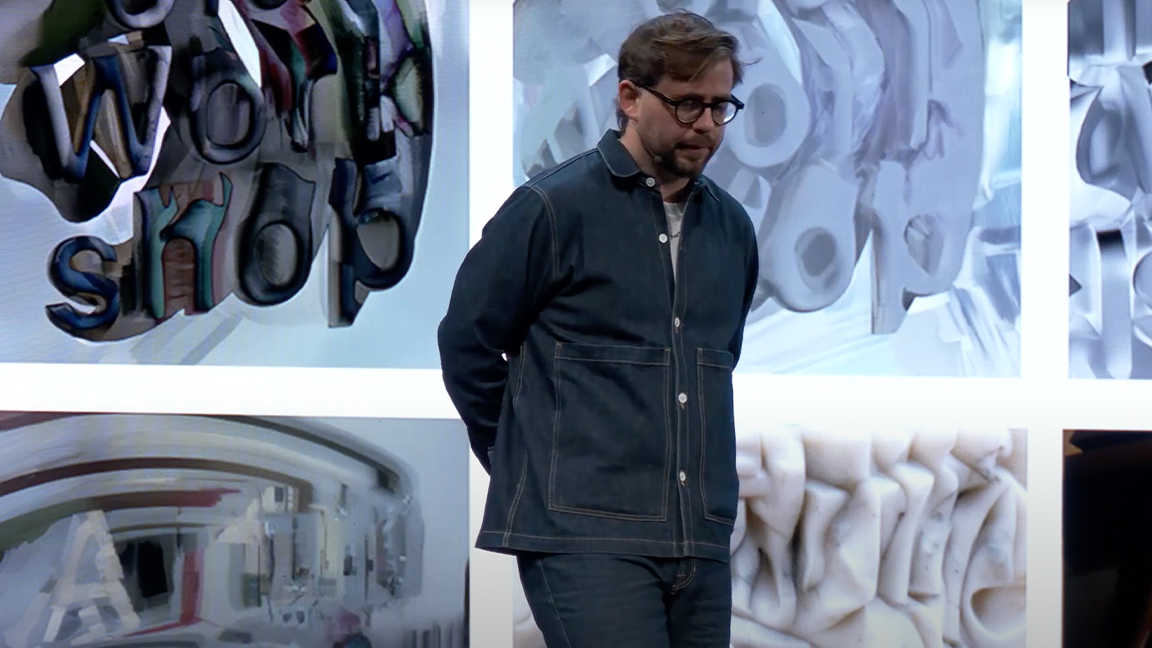
Like many creatives, I’ve watched the rise of AI art with a mix of curiosity and concern. For years the art I've loved, and struggled to make, has been tactile and intentional – pencil to paper, stylus to screen. The idea that an AI model could churn out art in seconds felt reductive.
Visiting the Freepik Upscale AI conference in San Francisco I was hesitant and but also intrigued by prospect of learning why and how AI could be used creatively. I was ready to meet a room full of over-promises and underwhelming results, a crowd eager to love bad Ghibli memes.
Instead, I found a glimpse of something real and genuinely creative; a tangible future that includes AI art and filmmaking. Not a gimmick, not a tech demo dressed as innovation, but a genuine evolution in how we create and experience art.
I've previously met artists like Martin Nebelong who show how using AI can speed up workflows but the speakers and creatives at Freepik Upscale AI conference revealed working faster and cheaper isn't a focus, finding a new art form is more important. And that stood out. The reasons to use AI for artists and designers isn't about doing more for less, crunching numbers, but about starting on the first rung of a new artistic ladder.

AI could be a chance to rethink
Held in the SFJAZZ Center gallery-like space, an atmospheric venue humming with nervous energy (and relentless espresso), the Freepik Upscale conference was about more than hot trends and hype. What I experienced was a rethink of what creativity could look like when technology isn’t the end, but the means. When artists get to use AI image and video models to experiment and not demand a finished final project from prompts alone, then something interesting happens.
Andrea Trabucco-Campos, a graphic designer and Pentagram partner, grounded the conversation where it belongs – in history. He didn’t preach about disruption and faced-up to AI's biggest issue – a lack of originality – from the outset, pointing out human-made art is a mish-mash of influences; design building on past trends.

Andrea spoke about craft. His talk centred on Artificial Typography, a book that explores how AI "misreads" typefaces and how those misinterpretations become creative opportunities. Distorted ligatures, broken symmetry, moments of accidental beauty and yes, mistakes and misunderstandings by the AI model, can all be harnessed to create something new.
Here’s the key: Andrea doesn’t accept the output at face value. He curates. He edits. He works through hundreds of generated variations to find a single compelling form. His work reinforced what I’ve always believed, that the artist's eye, the taste, the decision-making, still belongs to the artist and it's something AI can't replace.

That shift in perspective continued with Jason Zada from Secret Level. Jason’s studio was behind the Wu-Tang Clan's Mandingo, a short film generated entirely with AI tools, from casting, environment design, lighting and animation. It’s ambitious, bold, and yes, still imperfect. But it marks a significant moment: a filmmaker using AI to realise cinematic ideas that would once have needed a studio budget.
Ahead of his talk Jason spoke to me about TRON and Mary Poppins, the creative milestones where new technology pushed storytelling forward. “AI is waiting for its TRON moment,” he told me. Jason is not chasing novelty. He’s aiming for a breakthrough, and the real power of what he’s building isn’t really about automation or replacing artists (he hires artists to work on his films), it’s about access. Ideas that used to die in notebooks can now be visualised on a laptop and brought to fruition.
Jason's talk also revealed the broader ambition Ai filmmakers should be aiming for – rather than the low-hanging fruit of 'Family Guy as real people' Jason says AI should be used for building worlds that have never been seen before; a small team can now make the music, the film, design the toys and create the video game using AI.
What I really found interesting? Jason physically rolled his eyes at the thought of AI Ghibli memes and endless fake movie trailers that riff on Star Wars – like many here he wants to use AI to create original worlds, not remix the past and create "low hanging fruit".

Mixing old and new tools
Henry Daubrez followed, and his approach might be the most aligned with how you or I have always worked and sort to create art. He treats AI as part of a broader pipeline, mixing Imagen 3 and Veo 2 images and clips with Blender, Photoshop, Premiere Pro and other traditional apps.
His approach centres the use of AI on artistic skill, with AI used as a new space to experiment. He remains focused on the fundamentals of filmmaking: pacing, story, emotional resonance and says AI can't be a shortcut achieving something that stands out.
“AI films need to be films first,” he said, and while it feels obvious the idea is simple but essential: the toolset means nothing if the intent isn’t clear. Henry’s work proves that AI can be integrated into traditional workflows without compromising vision. The human voice still leads, the new technology just extends its reach.


Visual design director GMUNK – Bradley G Munkowitz – echoed many of the themes and approaches I was hearing; AI isn't the answer its just part of the bigger question. GMUNK isn't shy about using new technology in his art, whether its using robotics and projection mapping for short film Box or using Cinema 4D to design animate TRON: Legacy's hologram UI sequences.
If anyone could challenge my ideas of originality in AI, it was GMUNK. His process is grounded in authorship, using his own drone footage and infrared photography with Stable Diffusion-made coral textures; he refined and animated the results in a mix of AI and traditional apps like DaVinci Resolve. There’s nothing generic about his work. It’s layered, considered and personal.
What GMUNK made clear is this: creativity in AI isn’t about the model, it’s about the content you feed it, the choices you make and how you shape the outcomes. The artistry isn’t erased, it’s amplified.


Rethinking the AI debate
I left the conference with questions that are still unanswered, about ethics, authorship and where this all leads, but I also left with clarity. The conversation isn’t about AI replacing creativity, it’s about how it reshapes the process. It's not about using prompts creating a finished project, or replacing artists or making something for less, that simply leads to the low-hanging fruit so hated by everyone.
For me, every speaker showed how AI, when used intentionally, doesn’t dull artistic vision but sharpens it. Ideas can be pushed further, faster. AI can enable you to iterate in hours what once took days. More than anything, AI opens doors to creative territories we haven’t had the time, tools or freedom to explore yet.
I came in ready to tut and demand answers to big questions on copyright abuse – interestingly, everyone attending believes AI companies need to address this – but I left wanting to experiment and discover what AI can actually do.
The future of creativity doesn’t look like machines and algorithms slot-maching art in a vacuum. It looks like artists – designers, filmmakers, animators – using new tools to tell different stories. And that, to me, feels a lot less like a threat, and more like an opportunity.

Visit the Freepik Upscale Conference website to watch all the talks. Read our Freepik AI review for more on these tools.







